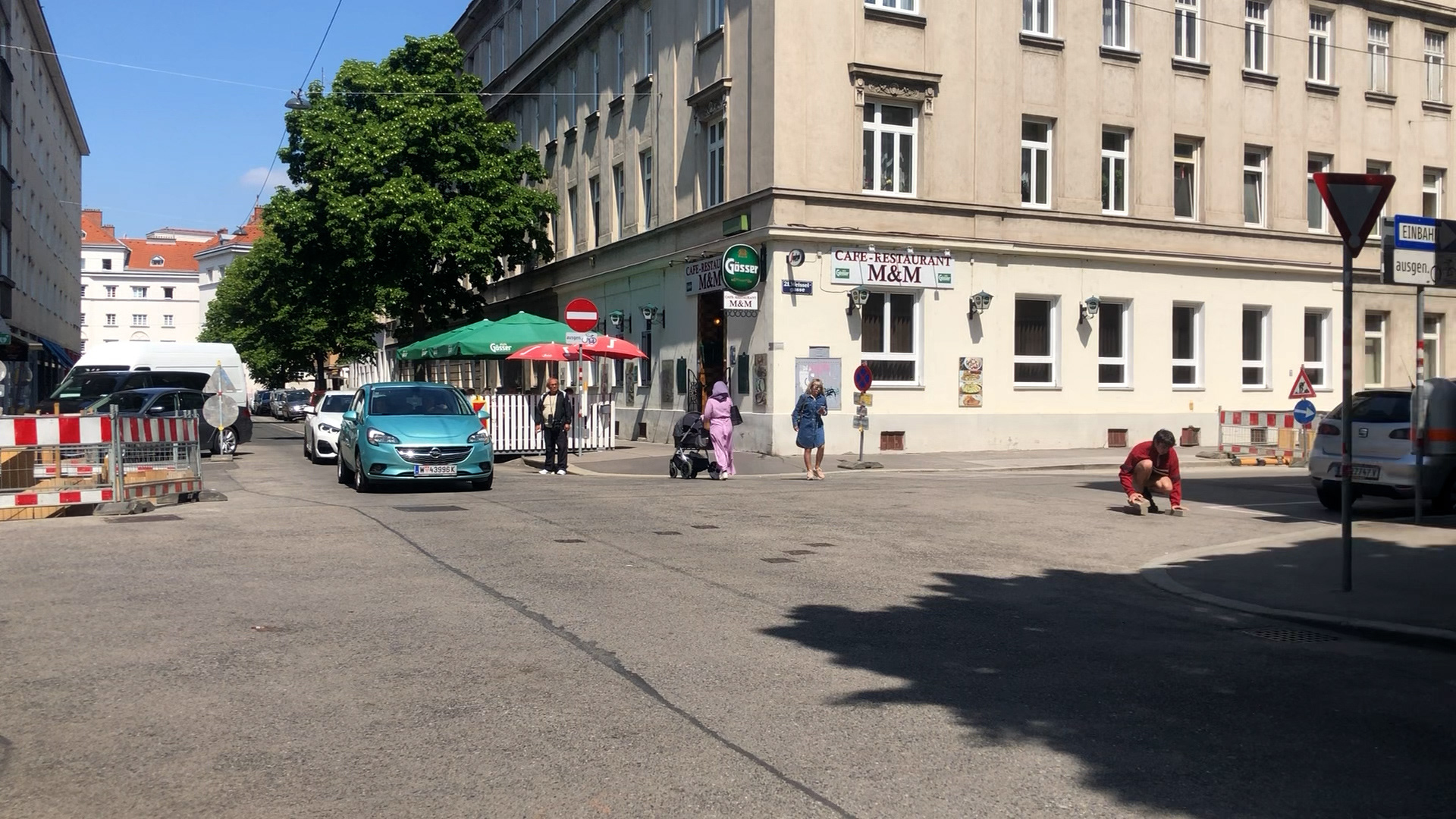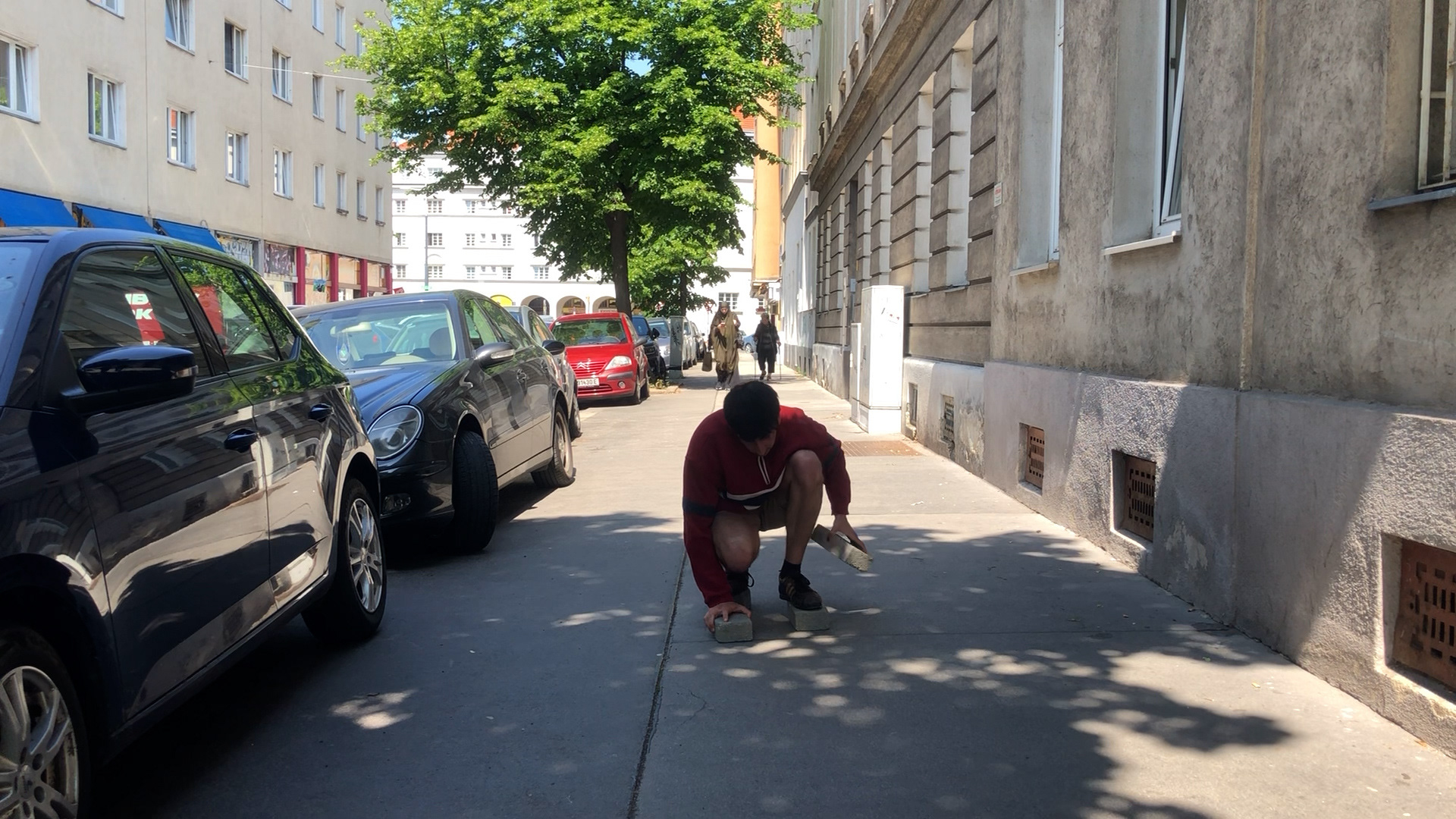The fictionally founded Institut für Urbane Wagnisse (Institute for Urban Boldness) is dealing with the street as a living organism in an attempt to explore and understand the range of its facets. Using Schleifgasse in Vienna Floridsdorf as an example, various artistic methods were developed to better understand the complexity of the street.
The idea of public space is commonly associated with public squares and parks, whereas it is the streets where everyday life is mainly taking place; it is the streets where most of the daily social practices are being played out.
The fictionally founded Institute for urban Boldness is therefore focused on the street as a living organism in attempt to explore and understand its different dimensions. Through numerous artistic practices the material and immaterial resources of the street will be revealed. The Institute for urban Boldness sees itself as a creator of fantasy activities, which do not deliver „utilisable” results in the capitalist sence, but rather introduces new methods for interacting with the street and understanding the range of its facets. The importance of the relationship to one‘s own living environment in the urban context will be emphasized and explored through personal experience.
The fictionally founded Institute for urban Boldness is therefore focused on the street as a living organism in attempt to explore and understand its different dimensions. Through numerous artistic practices the material and immaterial resources of the street will be revealed. The Institute for urban Boldness sees itself as a creator of fantasy activities, which do not deliver „utilisable” results in the capitalist sence, but rather introduces new methods for interacting with the street and understanding the range of its facets. The importance of the relationship to one‘s own living environment in the urban context will be emphasized and explored through personal experience.
Format: Public Intervention
Team: Keit Bonnici, Lukas Lex, Lukas Weinlein
Team: Keit Bonnici, Lukas Lex, Lukas Weinlein
A breakfast on the street
Eating while walking on the street is an everyday practice. The portable table for four explores the concept of communal eating while standing or walking on the street. In doing so, the table creates a private space that does not require a fixed location. It is a solution to the lack of consumption-free zones in public spaces. This dynamic activity of the common group on the street creates a lively atmosphere and promotes social togetherness. This new way of eating together on the street creates a new spatial structure in which people perceive and experience their surroundings in a new way.
Material: A mobile table made of cardboard
Format: Intervention, HD video, 1:18 min.
Format: Intervention, HD video, 1:18 min.
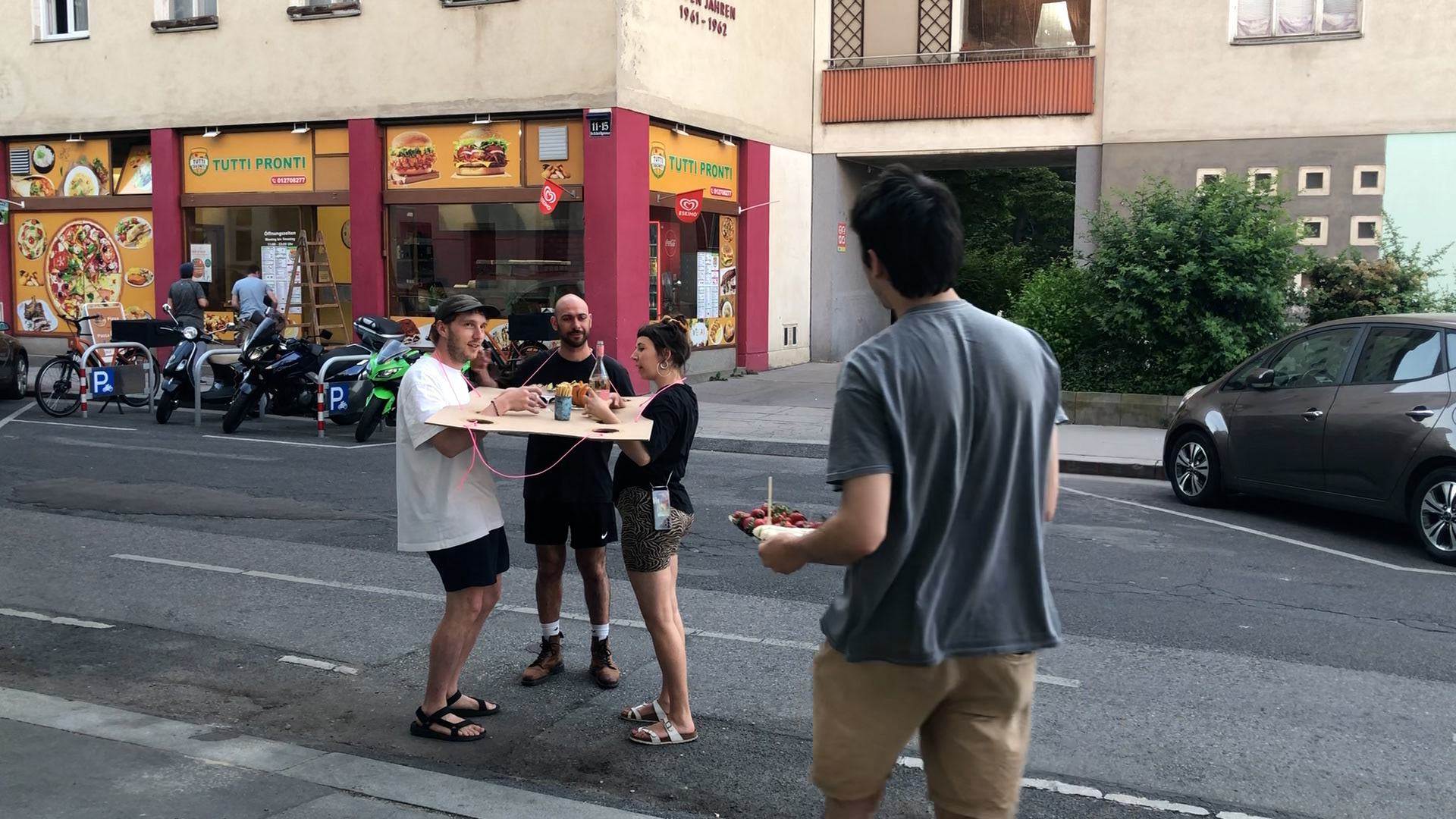
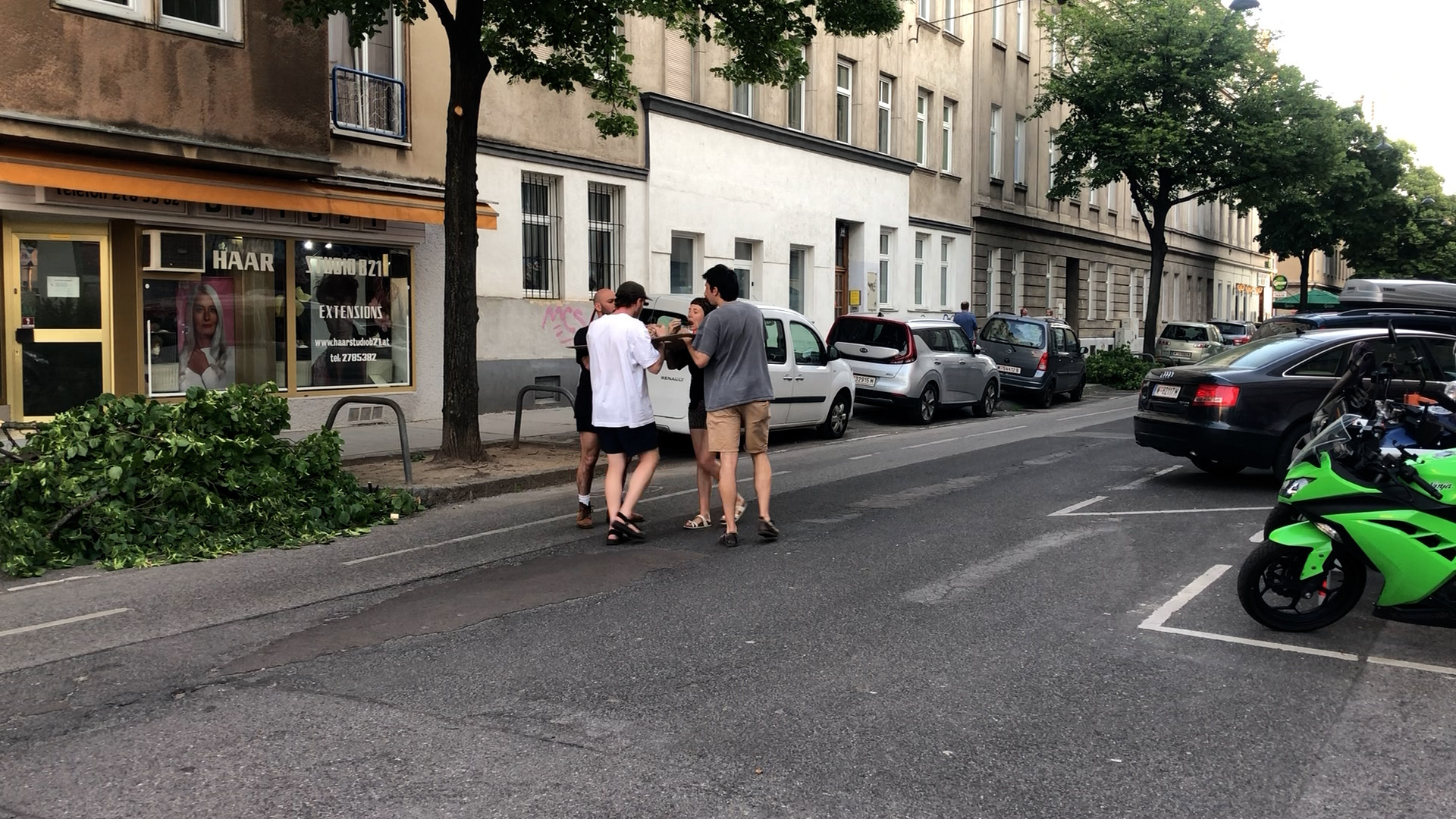
A look down
Our orientation is mostly based on what seems familiar to us, in the street space this means the space as a whole.By changing the angle of view on the street floor, our sense of orientation is limited and our confidence in the environment has to be rebuilt through new images. The new ways of seeing break through our entrenched social behaviour on the street and challenge us to change our behaviour. Since we can only look at the ground, our movements become slower and our auditory perception is enhanced.
Material: A box with a cardboard cutout Format: Intervention, HD Video, 2:00 min.
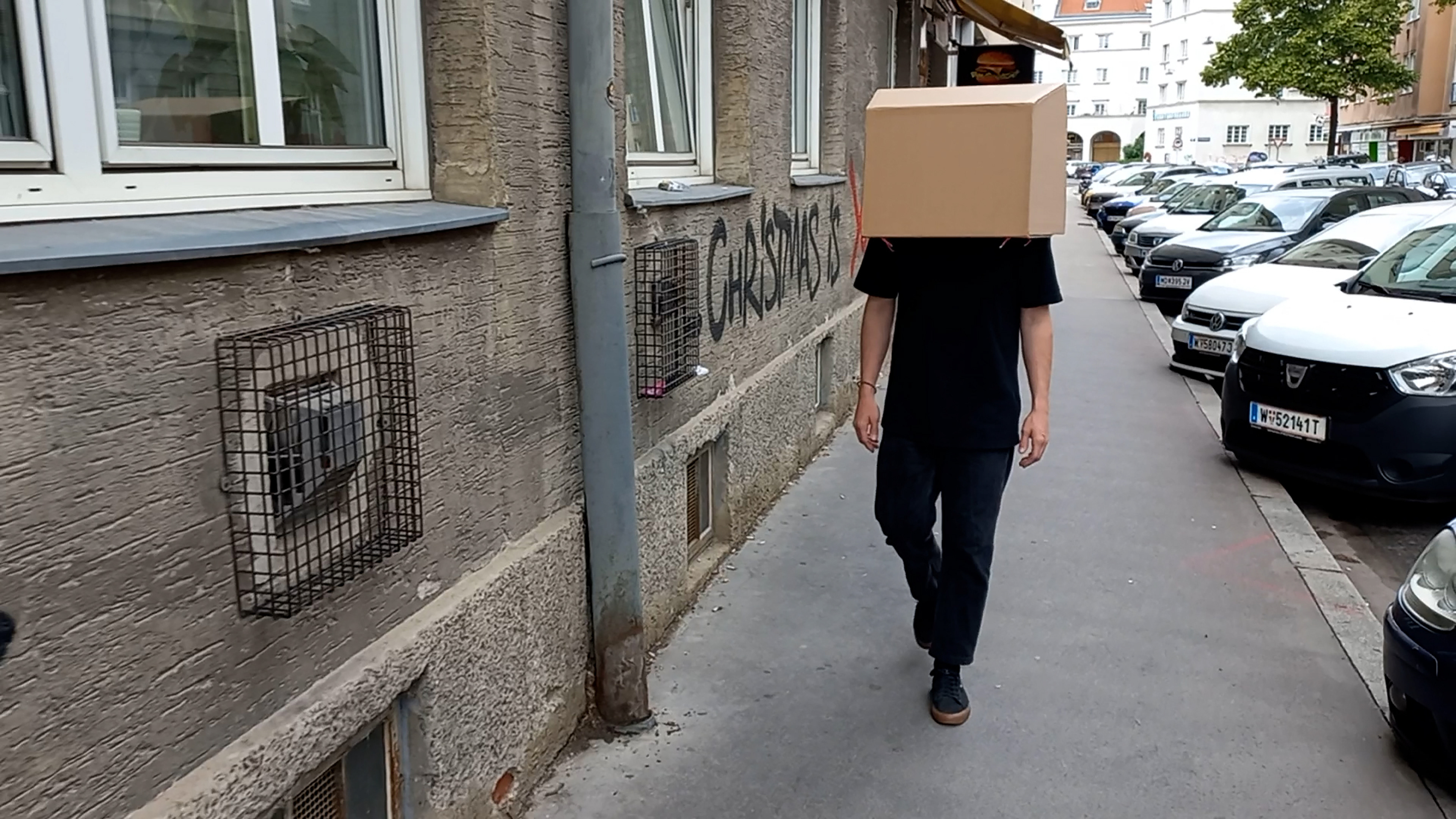
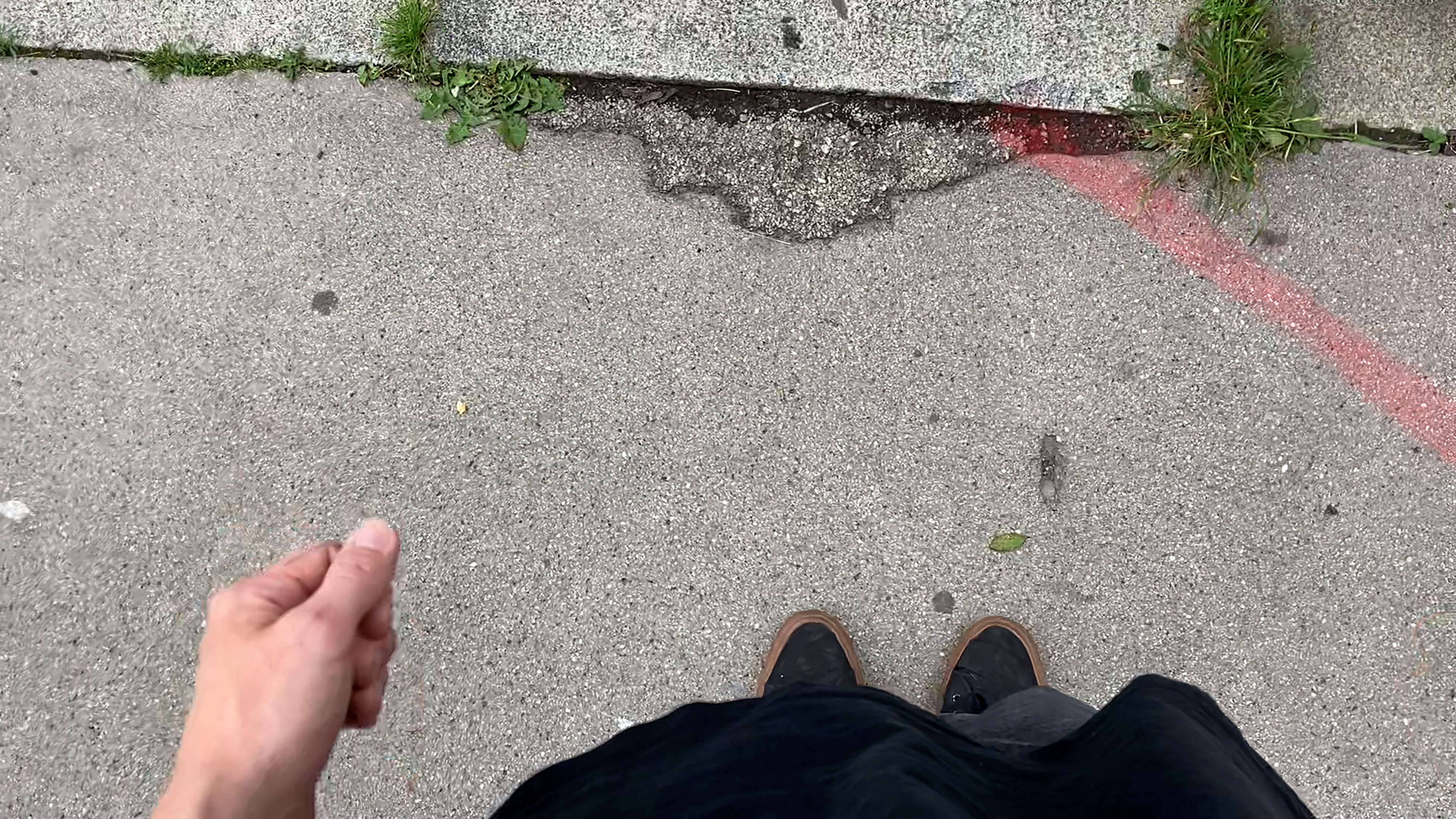
A look upwards
Our perception in road traffic is often focused on several things at once. It is hardly possible to concentrate on one thing alone. The periscope for the head, tries to look upwards while moving along the road. The orientation is based on the adjacent facades, the power lines, the trees and the things that one does not otherwise get to see. By looking at the unknown and the resulting change of movement in the public space "street", we open up a new perspective on the surroundings that are otherwise familiar to us.
Material: A self-made periscope made of cardboard
Format: Intervention, HD video, 0:49 min.
Format: Intervention, HD video, 0:49 min.
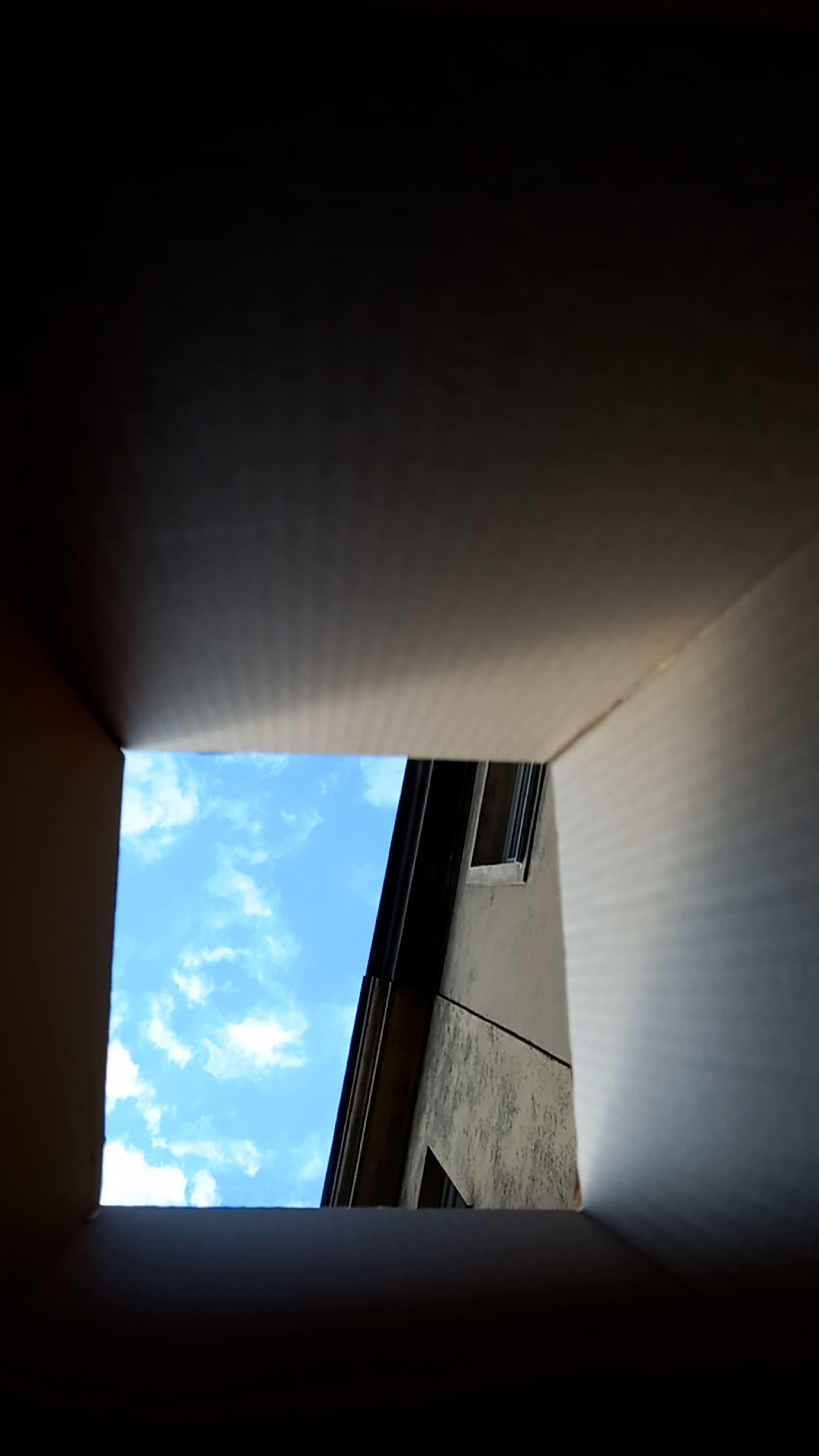
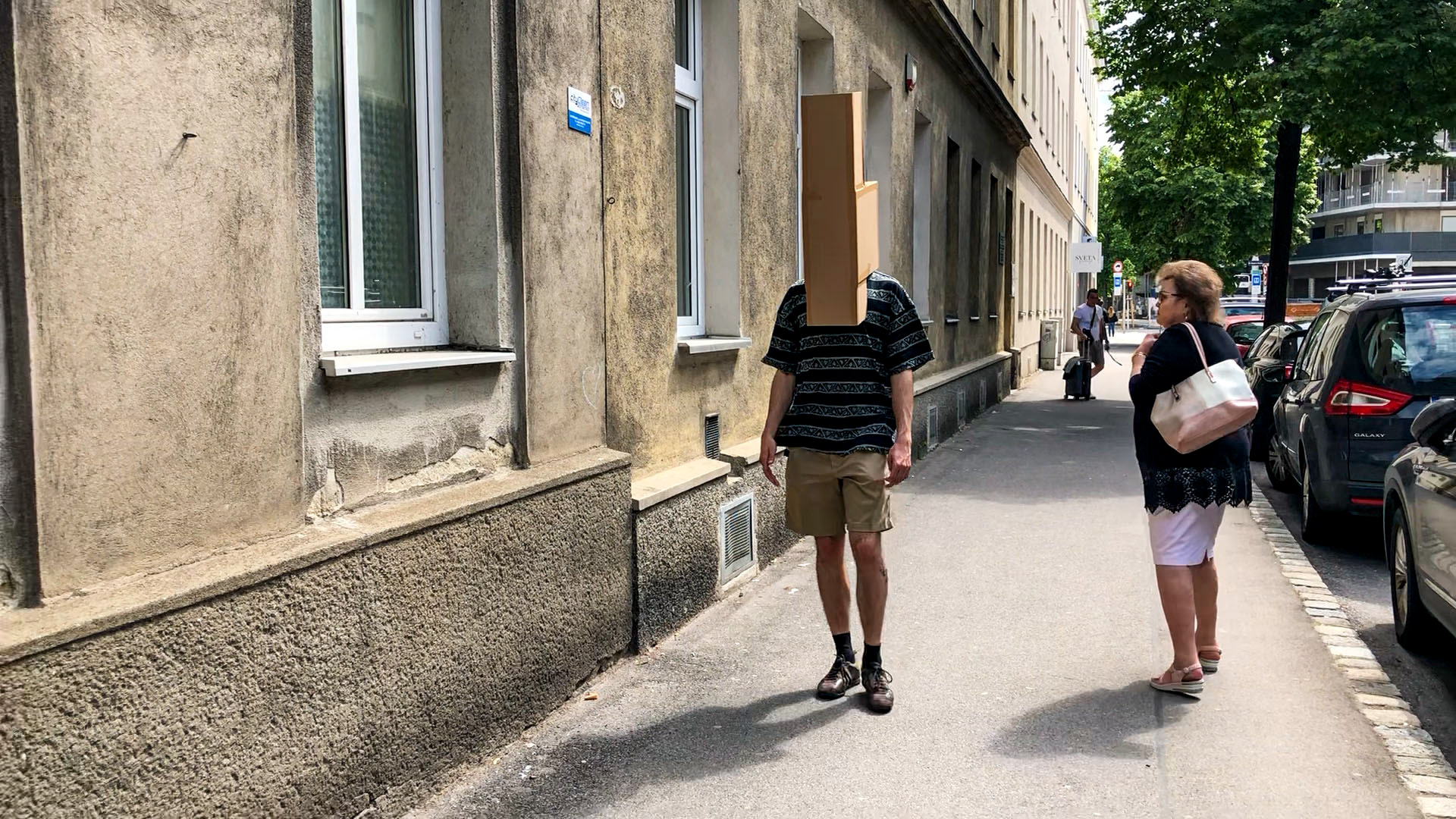
Shouting against traffic
Shouting is considered as an aggressive act. Especially in public spaces, loud voices attract special attention. The noise of motorised traffic, on the other hand, is simply accepted. By merging one's own voice with the acoustic dimension of the street, the effect of the volume level is tested. The megaphone is often used to achieve greater range and attention, especially in situations where a single voice would be drowned out. The megaphone can also be symbolic of the fight against something, in this case against motorised traffic. It emphasises the power of one's own voice to draw attention to noise pollution in public spaces.
Material: Megaphone and stand made of cardboard
Format: Intervention, HD video, 1:02 min
Format: Intervention, HD video, 1:02 min
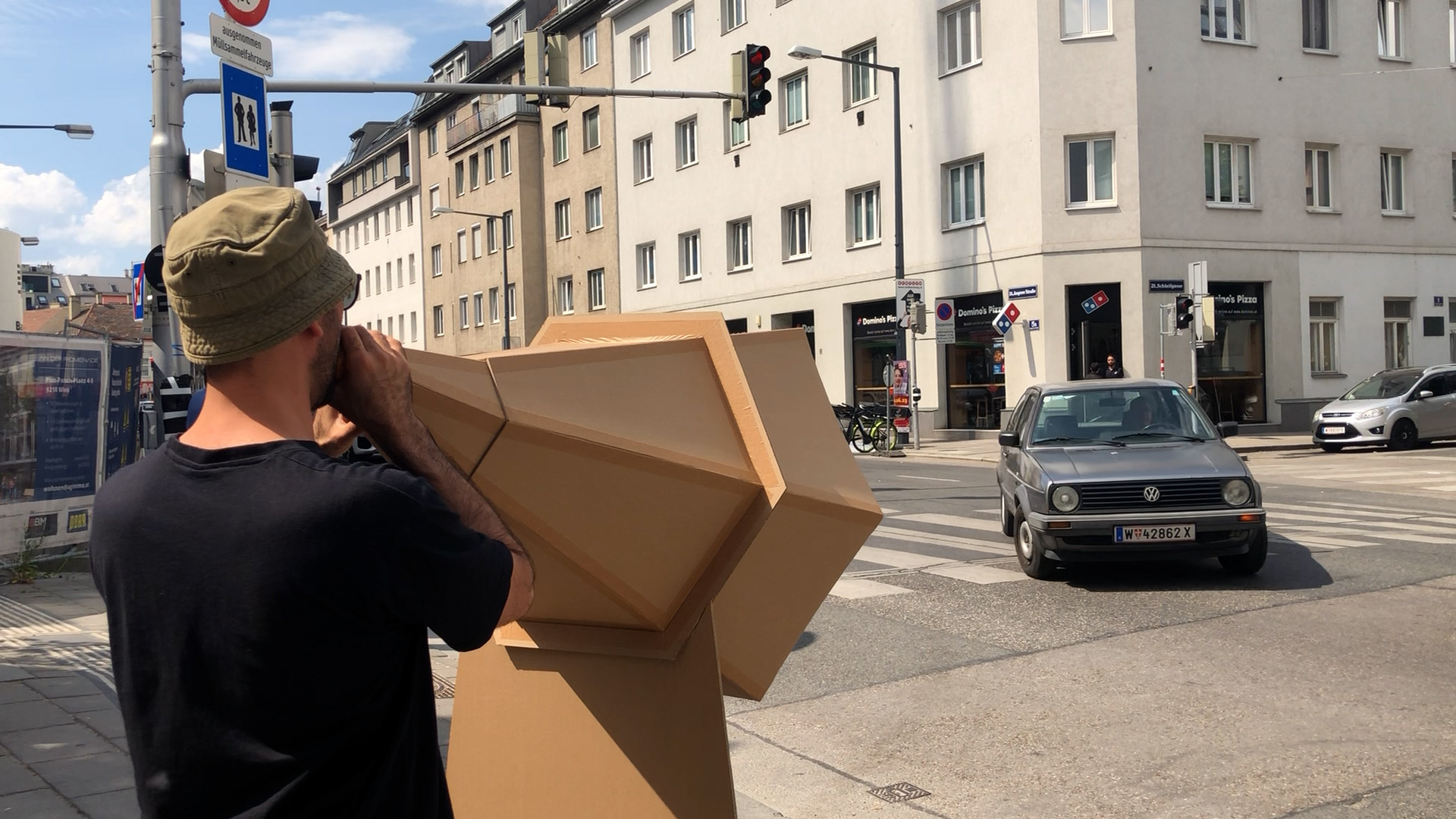
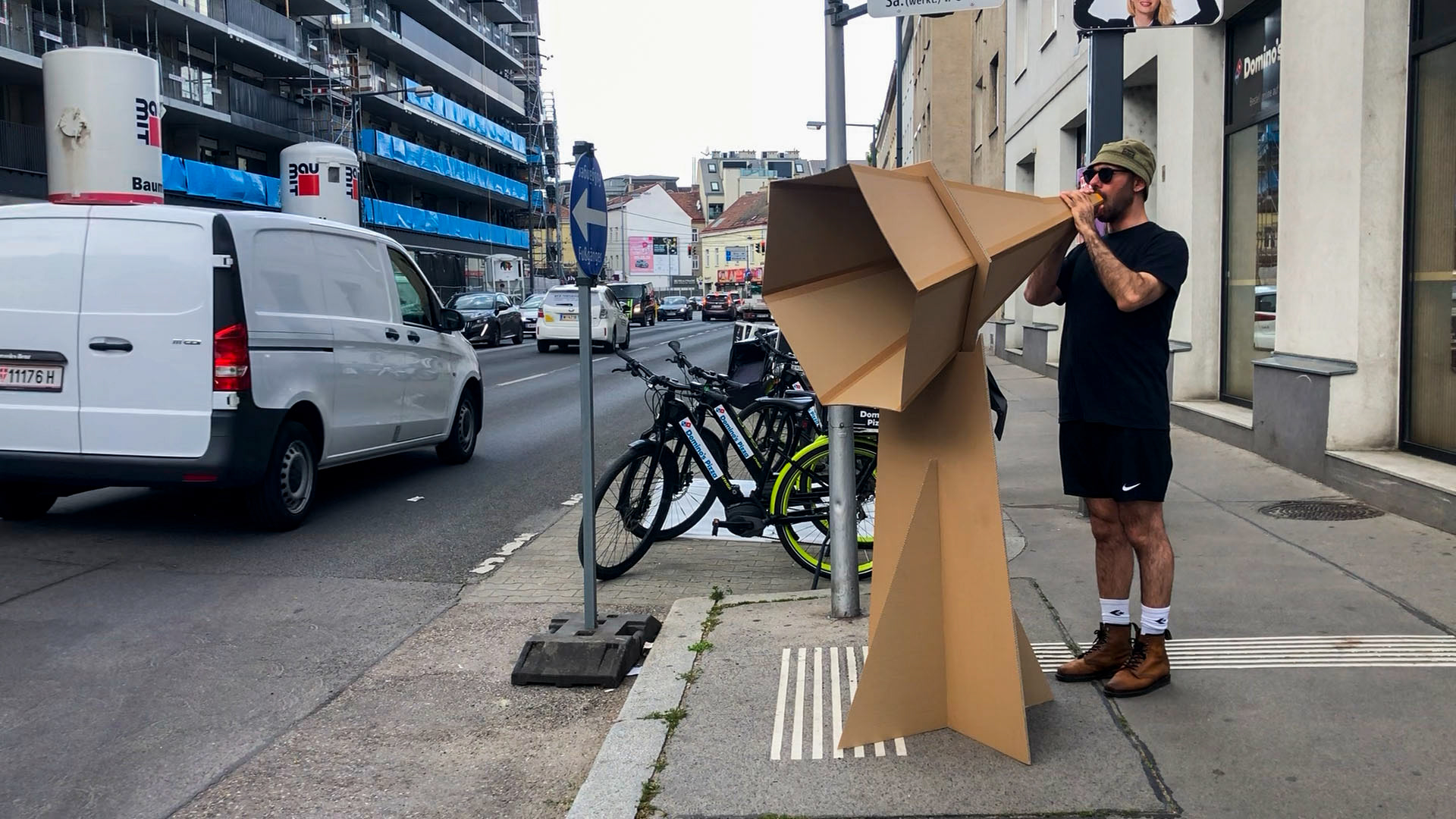
Locomotion on road fragments
The way we move on the road fragments changes our sensory perception. The space that surrounds us slows down, and we ourselves also move more slowly. Our relationship to the environment intensifies as we focus our attention entirely on the movement. In connection with the materiality of the street, the perception of our own body also expands. The texture of the surface becomes tangible and influences our body awareness and movement patterns. The physical interaction with the surface of the road enables us to grasp the connection between our body and the environment in a new way.
Material: Four street stones
Format: Intervention, HD Video, 1:02 min.
Format: Intervention, HD Video, 1:02 min.
